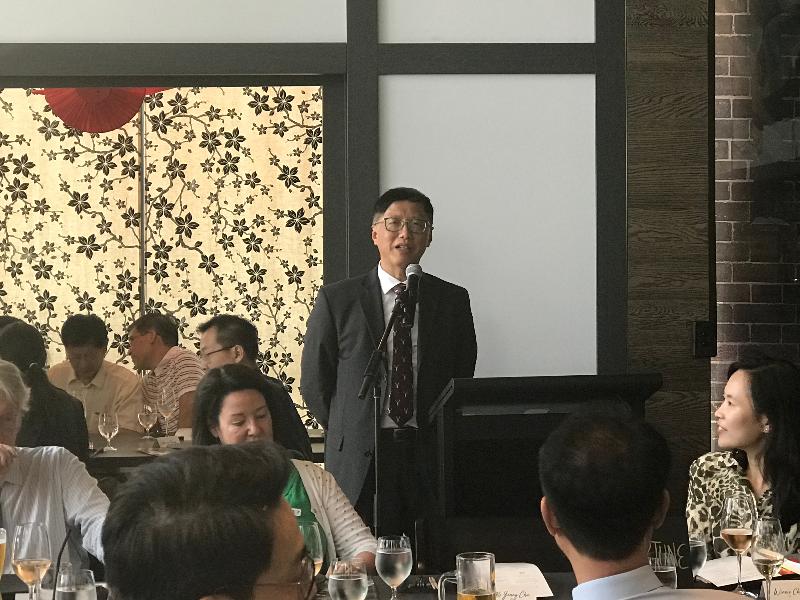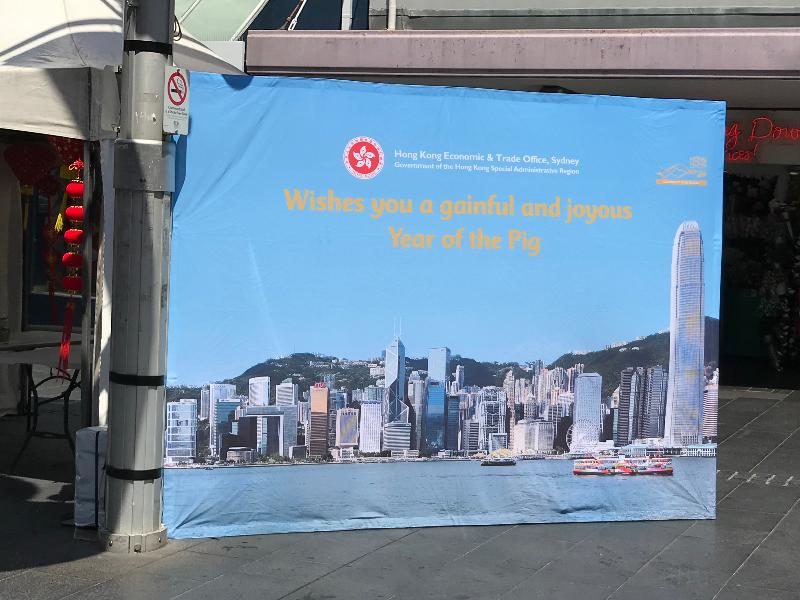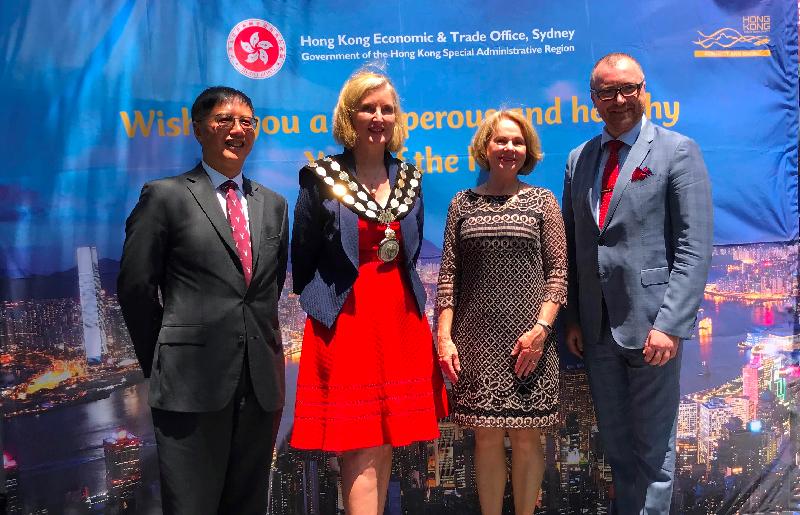Following is a question by the Hon Chan Hak-kan and a written reply by the Secretary for Commerce and Economic Development, Mr Edward Yau, in the Legislative Council today (January 30):
Question:
The Government put forward in the 2017 Policy Address a Subsidy Scheme to Extend Fibre-based Networks to Villages in Remote Areas (Subsidy Scheme). In this connection, will the Government inform this Council:
(1) of the latest progress of the tendering exercise conducted for selecting fixed network operators (FNOs) to participate in the Subsidy Scheme, and the respective expected dates for commencement and completion of the works on laying fibre-based networks;
(2) of the villages which are now covered by the Subsidy Scheme at present and their respective populations (set out by District Council (DC) district);
(3) as some DC members have relayed that some villages (e.g. Hilltop Garden, Sha Po Tsai and Chung Tsai Yuen Garden in Tai Po, and Ki Lun Tsuen in the North District) are not covered by the Subsidy Scheme, whether the Government has completed consulting the relevant DCs and rural committees; whether it will let the Subsidy Scheme cover more villages; if so, of the details; if not, the reasons for that;
(4) as some DC members have pointed out that based on a conservative estimation, about 200 000 households are currently living in surveyed squatter structures across the territory, and that the broadband services in some squatter areas have rather low Internet access speeds, whether the Government will let the Subsidy Scheme cover squatter areas; if not, how the Government assists the residents of squatter structures in accessing high-speed broadband services;
(5) given that if villagers currently have access to broadband services with an Internet access speed of 25 megabits per second (Mbps) or above, the villages concerned will not be covered by the Subsidy Scheme, of the Government’s justifications for setting the threshold at that Internet access speed; in view of the Government’s ongoing initiatives of promoting the development of Hong Kong into a smart city as well as cost-effectiveness considerations, whether the Government will raise the threshold to 50 Mbps or higher so as to obviate the need to re-launch the Subsidy Scheme several years later in order to meet the actual needs of the villagers; if so, of the details; if not, the reasons for that;
(6) whether it will formulate performance indicators for the Subsidy Scheme, such as (i) in respect of the villages for which the works under the Subsidy Scheme have been completed, the percentage of villagers who subscribe to the high-speed broadband services provided by the relevant FNOs, and (ii) the Internet access speed and the stability of the broadband services provided by FNOs under the Subsidy Scheme; if so, of the details; if not, the reasons for that;
(7) as some villagers have indicated that they do not have a clear idea about the implementation of the Subsidy Scheme, of the existing means through which the Government disseminates the relevant information; whether it will consider strengthening its liaison with the villagers so as to answer their queries on the Subsidy Scheme; if so, of the details; if not, the reasons for that; and
(8) as some members of the public have pointed out that in tandem with technological advancement, broadband services have become a daily necessity, whether the Government will amend the relevant licensing conditions to stipulate that FNOs must provide their customers with broadband services with an Internet access speed not lower than 50 Mbps; if so, of the details; if not, the reasons for that?
Reply:
President,
To take forward the subsidy scheme of extending fibre-based networks to remote villages proposed by the Chief Executive in the 2017 Policy Address (Subsidy Scheme), the Commerce and Economic Development Bureau and the Office of the Communications Authority (OFCA) consulted the nine relevant District Councils (DCs) (North, Sai Kung, Tai Po, Sha Tin, Yuen Long, Tuen Mun, Tsuen Wan, Kwai Tsing and Islands), 27 Rural Committees (RCs) and the Panel on Information Technology and Broadcasting of the Legislative Council (LegCo) in the first half of 2018. On July 13, 2018, the Finance Committee of the LegCo approved a funding of $774.4 million for the implementation of the Subsidy Scheme.
My reply to the eight parts of the question is as follows:
(1) OFCA is actively preparing for the tender exercise. It is expected that tender documents will be issued in the first half of this year such that selected fixed network operators (FNOs) can apply for relevant permits of all departments concerned in a timely manner in order to perform different works including excavation and the laying of fibre-based networks and submarine fibre-based cables. Depending on the works progress and views of the villagers, it is expected that the subsidised lead-in connections can be extended to the villages concerned in phases from 2021 onwards.
(2) and (3) The Subsidy Scheme targets remote villages located far away from the existing fibre-based backbone networks of FNOs where villagers can only choose broadband services delivered over copper-based networks at a speed of 10 megabits per second (Mbps) or below. Having regard to the consideration above and based on the villages specified in the Rural Representative Election Ordinance and the List of Recognised Villages under the New Territories Small House Policy promulgated by the Lands Department, OFCA prepared the list of villages proposed to be covered under the Subsidy Scheme.
Taking into account the comments received during the consultation with the LegCo, the relevant DCs and RCs and after verification of the latest network coverage information with FNOs, OFCA notes that fibre-based networks of FNOs have already reached the vicinity of the entrances of some villages that were initially proposed to be covered under the Subsidy Scheme, and some other initially proposed villages are no longer inhibited. In view of this, OFCA has refined the total number of villages proposed to be covered under the Subsidy Scheme to about 235 villages which are located in nine districts in the New Territories and outlying islands. It is estimated that the Subsidy Scheme can benefit about 120 000 villagers.
OFCA has consulted the relevant RCs again in November 2018 regarding the refined list of villages and has been receiving comments from individual RCs. After receiving comments from all RCs, OFCA will finalise the list of villages to be covered by the Subsidy Scheme. According to the latest information, the number of villages to be covered and the estimated number of benefited villagers (by district) are as follows:
| District |
Number of villages proposed to be covered |
Estimated number of villagers benefited |
| North |
59 |
About 27 000 |
| Islands |
67 |
About 51 000 |
| Sai Kung |
44 |
About 13 000 |
| Tai Po |
26 |
About 10 000 |
| Sha Tin |
13 |
About 5 000 |
| Yuen Long |
12 |
About 5 000 |
| Tuen Mun |
7 |
About 5 000 |
| Tsuen Wan |
6 |
About 3 000 |
| Kwai Tsing |
1 |
Less than 1 000 |
| Total |
235 |
About 120 000 |
Given that Tai Po Hilltop Garden, Sha Po Tsai, Tsung Tsai Yuen and Ki Lun Tsuen as mentioned in part (c) of the question are not recognised villages specified in the Rural Representative Election Ordinance nor the List of Recognised Villages under the New Territories Small House Policy, they are not included in the list of villages proposed to be covered under the Subsidy Scheme. Nevertheless, as these four villages are all located close to those recognised villages to be covered by the Subsidy Scheme or those recognised villages with fibre-based network coverage, it will facilitate the improvement of fixed broadband services in these four villages.
(4) As squatter areas are in general located close to recognised villages, following the completion of relevant works of extension of lead-in connections to villages covered under the Subsidy Scheme by the selected FNOs, the new lead-in connections will not only benefit the recognised villages concerned, but will also help improve the fixed broadband services of the squatter areas nearby.
In addition, if the residents of squatter areas consider that their available fixed broadband services cannot fulfill the needs of the region, OFCA can convey their comments to FNOs and encourage them to improve their network coverage at the areas concerned.
(5) The current status of broadband services in remote villages can be generally classified into two categories: (a) villages with insufficient broadband speed, i.e. lower than 10 Mbps; and (b) villages with a broadband speed of at least 25 Mbps.
The Subsidy Scheme targets villages with a broadband speed of 10 Mbps or below. These villages are generally located far away from the existing fibre-based backbone networks of FNOs, with a small number of subscribers and scattered houses. FNOs do not have sufficient commercial incentives to extend their fibred-based networks to these villages due to the high costs of network roll-out. Without Government subsidy, the villagers concerned may not be able to obtain fibre coverage even in the long-term future.
In view of this, the Government hopes to provide FNOs with financial incentives through the Subsidy Scheme to encourage the extension of fibre-based networks to the vicinity of the entrances of remote villages of this category. Upon the extension of fibre-based networks to the village entrances, FNOs can provide broadband services to villagers by connecting the fibre-based networks to the existing copper-based networks within the villages. Broadband speed can then be raised from the current 10 Mbps or below to at least 25 Mbps, and stability of service will also improve. If the villagers allow FNOs to roll-out fibre-based networks within the village, the broadband speed can further increase substantially to a level comparable to that in the urban areas (e.g. 500 Mbps or 1 000 Mbps). In addition, our tender assessment criteria will include evaluation of whether the bidding FNOs will commit to providing broadband services at higher speeds within the villages. If a FNO hopes to increase the chance of winning the bid, it will need to consider committing the roll-out of fibre-based networks within the villages for the provision of high-speed broadband services.
(6) The villages covered under the Subsidy Scheme will be grouped into six tender projects. The selected FNOs will be required to complete the relevant works of network roll-out in accordance with the requirements stipulated in the tender documents, including the roll-out of fibre-based networks to the villages specified in the individual projects. In addition, the commitments made by the selected FNOs in their proposals (e.g. the commitment to provide higher speed broadband services to villagers) will be incorporated as terms and conditions of the agreement for the Subsidy Scheme to be entered into with the Government.
Selected FNOs are also required to open up at least half of the capacity of the fibre-based networks and submarine fibre-based cables subsidised under the Subsidy Scheme for use by other FNOs for free. Such a requirement can allow other FNOs to also provide broadband services to the villages concerned by sharing the use of the subsidised facilities, thereby offering more choices to the villagers and keeping the service charges at a competitive level under the market mechanism.
(7) OFCA has all along been maintaining close communications with the relevant DCs and RCs for the Subsidy Scheme to ensure that the comments of the relevant stakeholders and villagers would be fully considered and the broadband networks could be extended to the relevant villages in a timely manner.
(8) The current universal service obligation aims to provide the public with basic telephone services, mainly covering basic fixed voice telephony services and public payphones. Its net cost is shared among telecommunications service providers. If the universal service obligation is extended to cover fixed broadband services, not only will financial burden on the telecommunications industry be substantially increased, there will also be a fundamental impact to the understanding of basic telecommunications services, and thus the matter must be considered carefully and holistically. We do not have such a plan at the moment.
read more




